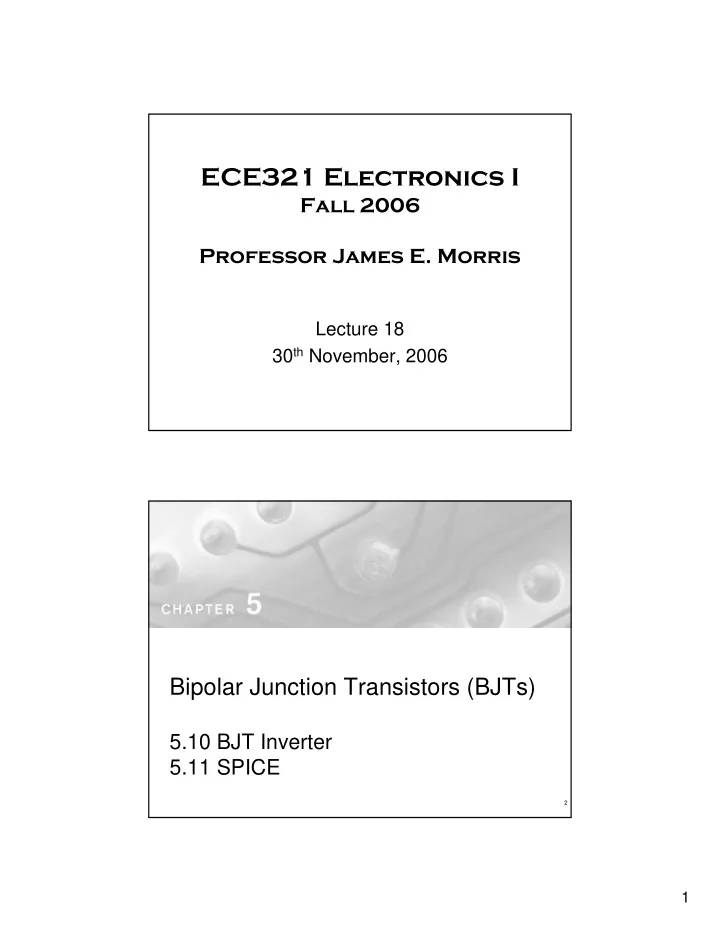

ECE321 Electronics I Fall 2006 Professor James E. Morris Lecture 18 30 th November, 2006 Bipolar Junction Transistors (BJTs) 5.10 BJT Inverter 5.11 SPICE 2 1
Figure 5.74 Basic BJT digital logic inverter. Figure 5.75 Sketch of the voltage transfer characteristic of the inverter circuit of Fig. 5.74 for the case R B 5 10 k Ω , R C 5 1 k Ω , β 5 50, and V CC 5 5 V. For the calculation of the coordinates of X and Y , refer to the text. 2
Figure 5.76 The minority-carrier charge stored in the base of a saturated transistor can be divided into two components: That in blue produces the gradient that gives rise to the diffusion current across the base, and that in gray results from driving the transistor deeper into saturation. Figure E5.53 3
Figure 5.77 The transport form of the Ebers-Moll model for an npn BJT. Figure 5.78 The SPICE large-signal Ebers-Moll model for an npn BJT. 4
Figure 5.79 The PSpice testbench used to demonstrate the dependence of β dc on the collector bias current I C for the Q2N3904 discrete BJT (Example 5.20). Figure 5.80 Dependence of β dc on I C (at V CE 5 2 V) in the Q2N3904 discrete BJT (Example 5.20). 5
Figure 5.81 Capture schematic of the CE amplifier in Example 5.21. Figure 5.82 Frequency response of the CE amplifier in Example 5.21 with R ce = 0 and R ce = 130 Ω . 6
Recommend
More recommend